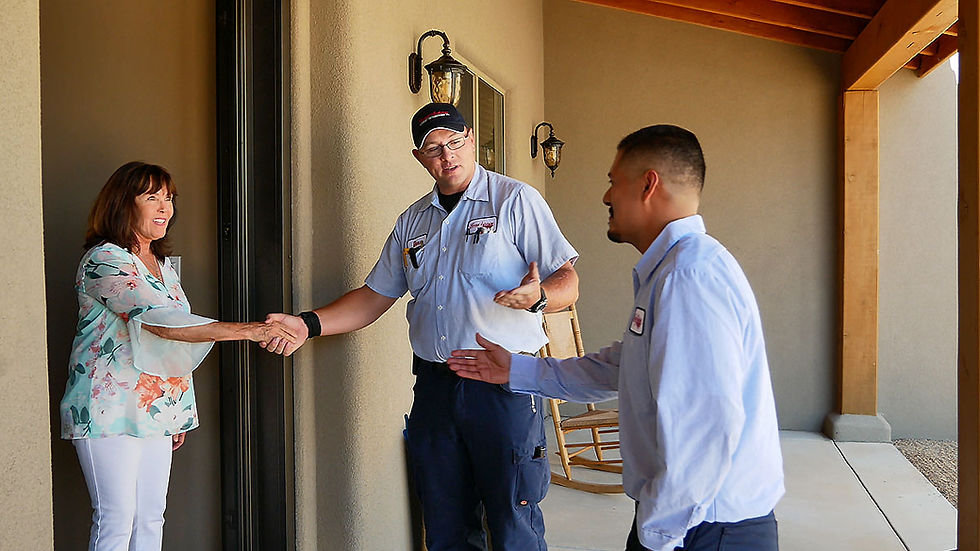5 important parts of your HVAC system
- Forrest Anderson
- Jun 2, 2018
- 2 min read

Many homeowners aren’t familiar with the different parts of an HVAC system. Although you should let HVAC professionals handle problems with your system, it’s helpful to know some of the most important parts. This can help you understand what’s going on if you have issues with your heating and cooling system.
Blower Motor
The blower motor in your HVAC system is the part that blows heated or cooled air into your home. When this motor kicks in, it pushes this air through your ductwork, which allows it to reach all parts of your home. Blower motors are available in conventional and variable speed models.
Blower motors can run into problems that affect how well your HVAC system heats or cools your home. Problems with the blower motor include having it run too often or having it not start at all. HVAC technicians should check this part of your HVAC system to make repairs or replace it if needed.
Compressor
A compressor, or condenser coil, is an HVAC component that helps keep your home cool.
Heat pumps and central air conditioning systems have these outdoor units. Compressors send heat into the air outside and cool homes by condensing refrigerant.
Compressors are prone to having problems when airflow through these units is obstructed.
This can happen when you have leaves or other vegetation around the unit. Shrubs or bushes can also obstruct compressors. Have HVAC technicians do maintenance on your compressor to keep it in good condition.
Evaporator Coil
Evaporator coils are important components inside heat pumps and central air conditioning systems. This coil contains refrigerant that absorbs heat and sends it back into your home as cooled air. This component also helps lower the humidity in your home.
Evaporator coils can have too much moisture on them, resulting in mold growth. These coils can also become frozen if you have any refrigerant leaks. Mold and ice can lower your air quality and even cause your HVAC system to break down. Have these coils cleaned and maintained to prevent this.
Combustion Chamber
The combustion chamber in a furnace is also known as a burner. Gas and air enter this part of your furnace, which causes a pilot or electronic ignition to start. In some furnaces, there is also another combustion chamber. This chamber catches and compresses unburned fuel and carbon monoxide. The result is a furnace with better efficiency.
Problems with the combustion chamber usually involve the way it ignites. Electronic ignition systems can be damaged or may malfunction. Pilot lights can go out or end up letting carbon monoxide into your home. It’s important to have an HVAC technician check and repair any problems you have with the combustion chamber in your HVAC system.
Heat Exchanger
Furnaces, including electric and gas models, have a heat exchanger that is used for warming up cooler air. This part of your HVAC system is what generates heated air to keep your home warm in winter.
Heat exchangers are made to be durable. However, they can develop cracks that could cause a carbon monoxide leak inside your home. Regular HVAC exchanger inspections can help prevent cracks and leaks.
Whether your HVAC system is louder than usual or just won’t start, contact Forrest Anderson today for service.
Contact Forrest Anderson Today!




My experience with SagaCity Tax’s bookkeeping services has been outstanding — everything is accurate and on time.
Great breakdown of those five critical HVAC components — the point you make about evaporator coils collecting moisture and potentially fostering mold really stood out. That kind of insight is exactly why homeowners can better understand when it’s time to call in a pro. When you pair that level of system care with thoughtful interior touches — say, choosing durable, easy-to-clean upholstery from Sofa On Your Choice or an elegant modular setup from Italian Sofa Suite — you really optimize both comfort and longevity in the living space.
Great breakdown of how each component (blower motor, compressor, evaporator coil, combustion chamber, heat exchanger) plays a vital role in your HVAC system, it underscores how even small issues can cascade. In my experience, when maintaining comfort in a room that also serves as a showcase — say, a luxury Italian bedroom furniture sets- ensuring optimal climate control is essential to protecting fine wood and upholstery. At Italian Living Style, we always advise clients to pair elegant furnishings with reliable HVAC maintenance, because preserving both form and function makes all the difference.
This blog is very informative — understanding the key parts of an HVAC system like the blower motor, compressor, and heat exchanger really helps homeowners know when to call in a professional. Just like maintaining HVAC ensures comfort, choosing the right furniture makes a huge difference at home too. I recently explored Cash and Carry Beds and their Italian Bedroom collection, and it’s amazing how the right setup can transform your living space into a stylish and comfortable retreat.